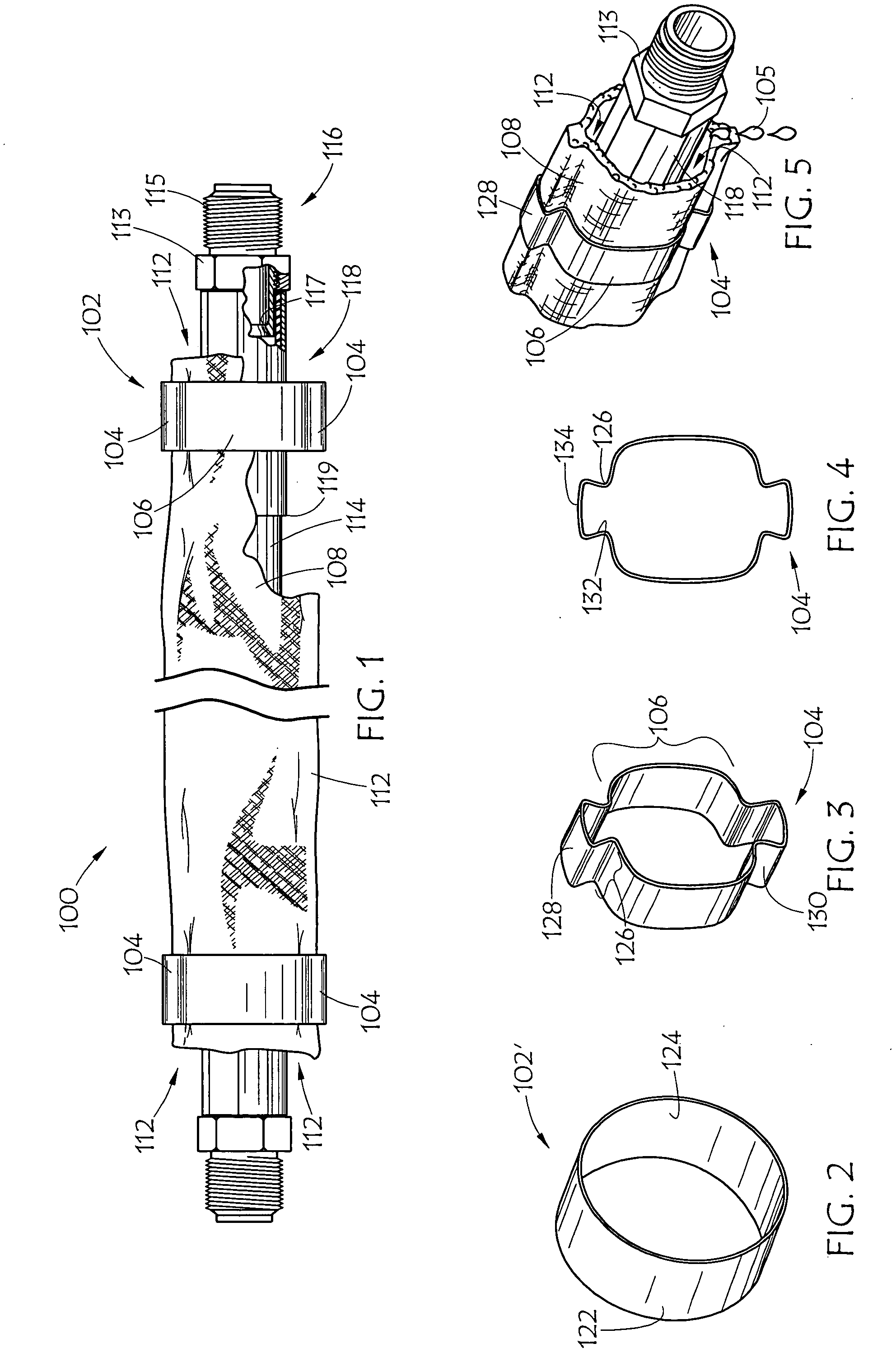Safety and indicator apparatus systems and methods for high pressure conduits
a safety and indicator apparatus and high-pressure conduit technology, applied in the direction of hose connection, mechanical apparatus, pipe protection against damage/wear, etc., can solve the problems of hose burst, pin-hole leakage, leakage and failure, severe tissue damage and burns, etc., to achieve simple manufacture and implementation, add stability and/or security, and the effect of simple structur
- Summary
- Abstract
- Description
- Claims
- Application Information
AI Technical Summary
Benefits of technology
Problems solved by technology
Method used
Image
Examples
Embodiment Construction
[0028]Referring to FIGS. 1 and 5, embodiment 100 of the present safety and indicator apparatus and system is shown. In various embodiments of the present invention, the high pressure conduit may comprise hydraulic fluid conduits, such as hydraulic hose, line or pipe. However, it should be understood that the present assemblies can be used in conjunction with conduits or bundles of conduits of virtually any type or size including conduits in the farming, heavy duty equipment, aerospace, power, medical, oil, automotive, and other industries. In other various embodiments of the present invention, high pressure fluid in the form of a liquid may be carried by high pressure conduits employing the present invention. However, it should be understood that the present assemblies can be applied to conduits carrying any type of material, including high pressure hydraulic fluids such as synthetic compounds, mineral oil, water and water-based mixtures, or any other material.
[0029]Referring back t...
PUM
 Login to View More
Login to View More Abstract
Description
Claims
Application Information
 Login to View More
Login to View More - R&D
- Intellectual Property
- Life Sciences
- Materials
- Tech Scout
- Unparalleled Data Quality
- Higher Quality Content
- 60% Fewer Hallucinations
Browse by: Latest US Patents, China's latest patents, Technical Efficacy Thesaurus, Application Domain, Technology Topic, Popular Technical Reports.
© 2025 PatSnap. All rights reserved.Legal|Privacy policy|Modern Slavery Act Transparency Statement|Sitemap|About US| Contact US: help@patsnap.com


